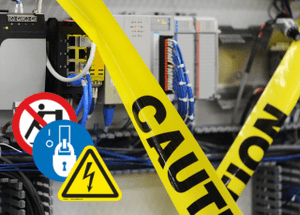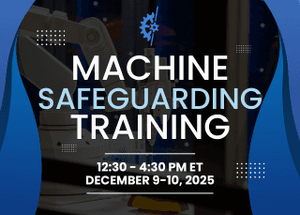Arc Flash Safety: What You Need to Know About Arc Flash Labels and Safety Assessments

Year in and year out, workplaces seem to be running afoul of the same basic safety violations, which the Occupational Safety and Health Administration chronicles on an annual basis. Chief among them for a long time now has been electrical safety, be it in the general sense or specific, such as wiring methods.
The good news? Electrical was conspicuously absent from OSHA's list of this past year. But just because it didn't make the top 10 doesn't mean that it's no longer a concern that warrants special attention. This is particularly true when it comes to arc flashes.
What are arc flashes? How do they come about? How do companies keep their teams protected and in compliance with safety protocols? Read on for these answers and more:
What Is an Arc Flash?
As defined
by Electrical Safety Foundation International, arc flashes come about when
there's a breakdown between two or more conductors resulting in the sudden
release of built-up energy. In a controlled environment, arcs are normal. In
fact, you see the product of arcs virtually every day, as the electrodes inside
light bulbs form arcs in order to illuminate.
But when a gap exists, the pent-up energy has to go somewhere, typically resulting in an explosion that is extremely hot, capable of causing second-degree burns or even death. In fact, arc flash temperatures can be four times hotter than that of the sun - reaching 35,000 degrees Fahrenheit.
Arc flashes can develop in a number of different scenarios, not only those that involve bridging electrical circuitry. As noted by EHS Today, they can also stem from dropping power tools or corrosion buildup, as metal conducts energy.
Although more protections are in place to guard against electrical-related injuries, they remain a common problem for workplaces. Consider these sobering statistics from the ESFI:
- 420 electrical injuries were reported in the construction industry in 2016.
- People miss a median total of approximately five days from work due to electrical injuries.
- Deadly electrical injuries rose 15 percent between 2015 and 2016.
- 53 percent of electrical fatalities, such as electrocutions, affected businesses in construction from 2003 to 2016.
- Younger workers are more than two times more likely to be killed by electrical accidents compared to more seasoned employees.
The intense heat arc flashes give off makes just about anything that's within the vicinity of them potentially flammable, including clothing, equipment and furniture. Because of this, hazard mitigation strategies must be implemented.
Arc Flash History
One of the
most basic and effective methods to implement derives from safety warning and
labels. For many years, there weren't any specific requirements that employers
had to comply with. However, the National Fire Protection Association updated
the
National Electrical Code in 2000. One of the provisions
required employers to inform workers, such as maintenance people, about the
potential for arc flashes when working on electrical grids, fuse boxes and
panels through signage. The mandate also necessitated that maintenance workers
wear personal protective equipment, or PPE, such as fire resistant gloves,
clothing and face shields.
Ever since then, OSHA and NFPA have worked in consultation with one another to better protect individuals working with electrical equipment from arc flashes. For instance, in 2014, OSHA published new requirements in the Federal Register that mandated employers to arrange for safety assessments so they can determine the probability of arc flashes occurring in electrically charged environments, as noted by EHS Today.
And in 2016, arc flash warnings received a face. Originally, compliant signage advising of electrical hazards had yellow backgrounds with black marking, which could depict either a downward-pointing arrow - resembling a thunderbolt - or jagged lines that illustrate an explosion. But the new symbol, which the International Organization for Standardization has since approved, combines the two illustrations.
Angela Lambert, director of standards compliance at Clarion, noted at the time that the update should help provide more clarity about what dangers exist, specifically as they relate to arc flashes.
"The new arc flash symbol better communicates the hazard at hand than the symbol for electricity or other similar symbols," Lambert explained. "It provides a clear distinction for arc flash hazards."
Here are a few strategies you can implement that can keep your workers and customers protected:
Arc Flash Safety Assessment
Arc flash
incidents often have several characteristics in common in order for them to
happen. Having a safety assessment can help you identify what these are so you
can implement the proper protocols, such as labeling and providing PPE.
Invest in Protective Equipment
Electricians
and businesses that sell or provide electrical services may need to ensure that
their workers have flame-resistant clothing, gloves and eye protection. You can
never go wrong by investing in safety gear. Flame-resistant face guards, boots
and other arc-rated clothing are highly recommended.
Make Regular Use of Safety Labels
Symbols are
the best way to communicate
electrical safety hazards. Be sure to put arc flash
safety warnings in prominent places so you're OSHA compliant. You may also want
to implement arc flash training for your crew. Even if they already know what
arc flashes are, it may be time for a refresher course.
At Clarion, our mission is reducing risk to better protect people. Clarion has all the arc flash labels you need and can also help you identify the potential for these hazards through risk assessments. Please contact us to discuss your specific needs.



